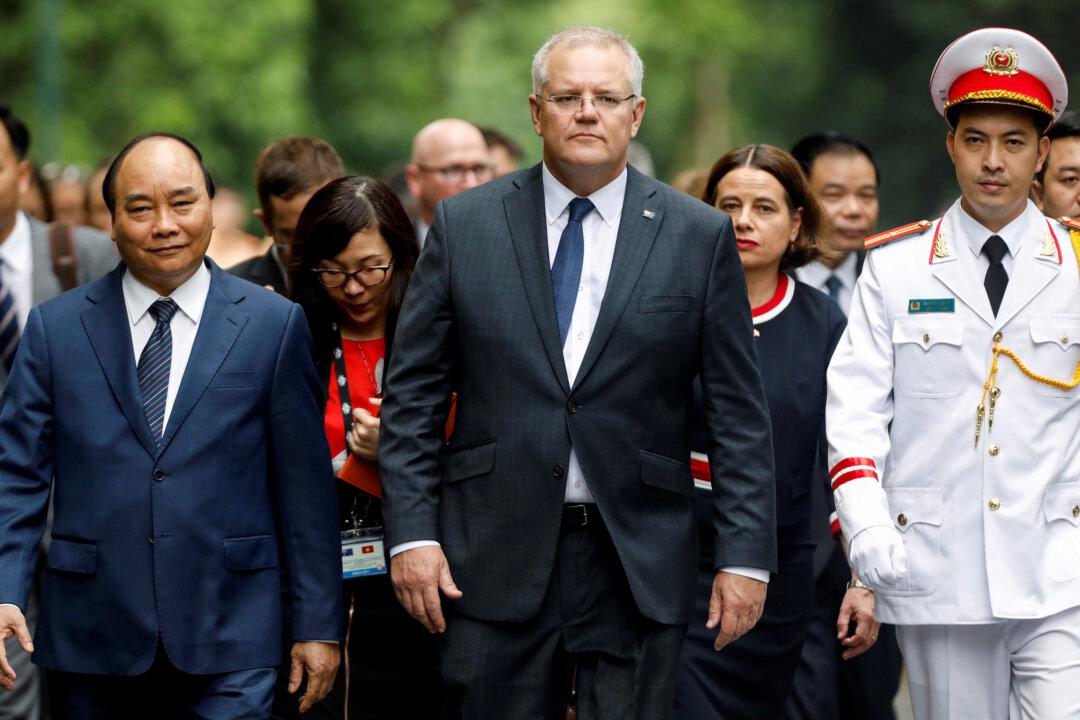HANOI—New allies Vietnam and Australia expressed concern on Aug. 23 about China’s activities in the South China Sea, where Vietnamese and Chinese vessels are locked in a tense standoff in Vietnamese-controlled waters.
Vietnamese Prime Minister Nguyen Xuan Phuc discussed the rising tensions with his Australian counterpart, Scott Morrison, during the first visit by an Australian prime minister to Hanoi since the countries formalized their “strategic partnership” earlier this year.





